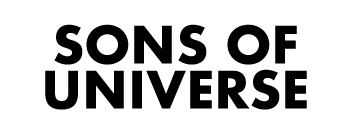These 11 women weren’t random.
They were longtime readers, coaching alumni, and community members who’d hit a wall with focus, motivation, or memory.
After one asked for a Mindvalley Superbrain review she could actually trust, we turned the question into an experiment.
What would happen if we tracked their transformations through the full 30-day Quest?
“The mind is not a vessel to be filled, but a fire to be kindled.” — Plutarch
They weren’t looking for hacks—they wanted mental clarity, confidence, and lasting cognitive performance.
One woman believed she was losing her memory.
What changed instead?
That story stayed with me.
And it might shift how you see your own mind, too.
If you’re looking for trusted personal growth & coaching tools I share when I can’t offer direct support, you’ll find them here.
Top Takeaways
Before diving deeper, here are 5 truth bombs from the Superbrain deep-dive you’ll probably never forget: <speakable>
- Forgetfulness is emotional – It’s not your memory—it’s unprocessed overwhelm stealing your clarity.
- This isn’t mental gymnastics – Superbrain works when it reshapes identity, not just speeds up recall.
- Hype-free brain training – What makes Superbrain different? It’s deeper than apps and surprisingly non-performative.
- My personal take – Watching Lena’s focus ritual was like seeing someone switch from AM radio to surround sound.
- The real rewiring? – It’s how you treat your brain in silence, not how much info you can retain.
What Exactly Is Mindvalley’s Superbrain?
“Brain upgrade” sounds buzzy.
But here’s what actually happens inside Superbrain—and what doesn’t.
- It’s a 30-day online program hosted on the Mindvalley platform
- Created by Jim Kwik, a renowned brain coach and author of Limitless
- Focus areas: memory, speed reading, focus, productivity, and identity
- Daily 20-minute video quests, brain exercises, and reflection prompts
- Teaches the “Kwik Recall” method, mental visualization, and mindset hacks
- Goal: turn learning from chore to superpower—and help you quietly restore inner confidence along the way.
Key Takeaway:
Superbrain isn’t just a productivity toolkit—it’s a shift in how you see yourself as a learner and thinker.
Tip:
Before upgrading your brain, get honest: what outdated labels are still driving your inner dialogue?
Pause & Rewire
If you’re mentally overloaded and need a clear, guided way forward, this free class is the starting point I always recommend. It’s not hype—it’s what I share with friends who need something real.
Watch the free Superbrain Masterclass 👈
“Does It Actually Work?”: Why The Answer Is Complicated
Spend five minutes reading reviews and you’ll see it: Mindvalley Superbrain review results split people.
Some rave.
Others roll eyes.
The truth?
It works—if you show up ready to shift mental patterns more than just habits.
I’ve seen women double their speed reading, sharpen memory retention, and finally focus without white-knuckling it.
But I’ve also seen people quit halfway, frustrated it wasn’t a quick brain training fix.
The Superbrain method isn’t about shortcuts—it’s a blend of identity rewiring, focus techniques, and exercises that subtly spark adult neurogenesis.
When people stopped chasing energy and started changing how they saw their own mind, that’s when things clicked.
Key Takeaway:
Superbrain trains your brain, but only if you’re willing to rewire your beliefs along the way.
Tip:
Track your progress weekly—not just in memory, but in how you speak to yourself when you forget.
Sophia’s Wake-Up Call: When “Forgetfulness” Wasn’t What It Seemed
Sophia was 52 and convinced her brain was slipping.
“Early signs,” she said.
She’d forget birthdays, misplace keys, lose threads mid-sentence.
But after going through Mindvalley Superbrain, she realized it wasn’t her memory failing.
It was overload, distraction, and a buried belief that she was losing control.
The daily lessons in the Superbrain Quest—especially the name recall drills and focus resets—changed that.
The shift didn’t come from hype.
It came from practical exercises that helped her retrain mental focus and reminded her of her own memory power.
One day, she aced a client pitch by remembering every name in the room.
She cried.
She laughed.
And she said this: “I’m not broken—I was just never taught how to remember.”
That’s the moment I knew the Jim Kwik Superbrain Review we were building wasn’t about data—it was about reclaiming dignity.
Key Takeaway:
What we call forgetfulness is often chronic distraction layered with shame.
Tip:
Before diagnosing memory loss, explore your emotional bandwidth.
What unprocessed stress is hijacking your clarity?
Is Superbrain Worth the Cost?
Let’s get real: brain optimization isn’t free.
Superbrain costs around $449 standalone or $499 with the full Mindvalley membership (which includes other programs).
You get daily lessons, lifetime access, and a global community focused on mental performance and growth.
But is it worth it?
If you’re just collecting tools, probably not.
But if you want true brain enhancement and a chance to upgrade your identity, the structure delivers.
This Mindvalley’s Superbrain review shows how the program applies whole brain learning—not just tips—to train your learning potential using the Kwik learning method.
And it’s deeper and more habit-forming than typical online brain training apps.
Curious but unsure?
The free masterclass 👈 gives a pressure-free glimpse.
If you’re weighing it against something more intuition-driven, like the Silva Method, the difference is clear: Superbrain trains how you think — Silva trains where your thinking begins.
Key Takeaway:
Superbrain is less about tricks and more about shifting the story your brain believes about you.
Tip:
Before buying, ask: “Am I willing to practice—not just consume—this kind of transformation?”
This Is the One I Recommend
If I could bottle up what I’ve seen work—across burnout, brain fog, and belief rewiring—it’s this. The structure, identity work, and daily rhythm just land.
Get lifetime access to Superbrain here 👈
The “Brain Loop” That Changed Lena’s Entire Workflow
Lena, 28, was a graphic designer drowning in tabs, caffeine, and self-doubt.
She’d tried every productivity hack—but her mind was wired for chaos, not clarity.
Her problem wasn’t laziness.
It was a lack of direction in everyday life.
Week 2 of Superbrain’s 30-day module introduced the turning point.
Kwik’s “brain loop” journaling ritual—clarify, visualize, review—wasn’t just habit-building.
It became her personal alignment tool.
It gave her focus techniques she could actually use between meetings.
With the daily lessons, her learning speed and project clarity soared.
She no longer reacted—she responded.
It was one of the most effective integrations I saw during our Jim Kwik Superbrain Review.
No fluff.
Just practical tools that helped her deepen self-trust while building structure, presence, and calm momentum.
She called it a “powerful tool for focus that finally fit into my brain—not the other way around.”
Key Takeaway:
You don’t need more time.
You need a brain loop that aligns focus with meaning.
Tip:
Each morning, write down one thing you want to remember—not just tasks.
Give your brain direction, not demands.
What Jim Kwik Gets Right About Learning (That Schools Don’t)
This part of our Jim Kwik Superbrain by Mindvalley Review deserves a spotlight: his teaching reframes how we approach learning itself.
We weren’t taught to think clearly—we were taught to regurgitate.
School emphasized reading speed, grades, and output.
But the Superbrain Quest shifts the focus toward beliefs, behavior, and real-life practical techniques.
Instead of testing memorization, it helps unlock your full learning capacity—something most traditional systems ignore.
The deeper insight?
It’s not about working harder.
It’s about upgrading your identity as a learner.
That’s what Mindvalley Courses like Superbrain do best when approached with intent.
They help people in personal evolution embrace not just powerful techniques, but a different relationship with their own intelligence.
And that’s a bigger shift than any shortcut.
Key Takeaway:
You don’t need a better brain—you need a better belief about what your brain is for.
Tip:
Next time you forget something, say: “That’s not like me.”
Don’t reinforce the old narrative.
When You’re Done Trying Random Hacks
If you’re serious about rewiring your focus, memory, and mindset—skip the tips and start the real work. This is what I trust when I can’t coach someone directly.
Start the Superbrain journey now 👈
The Most Unexpected Change: A Better Relationship With Silence
This surprised me.
Multiple women in the group described the same shift—but none of them expected it.
Not sharper memory.
Not faster reading.
And not mental hacks.
They became comfortable with silence.
Not just external silence—internal.
Less self-critique. More thoughtfulness. More stillness.
They said it improved how they moved through daily life—conversations, decisions, even how they started mornings.
It wasn’t a headline result, but it was real.
Through practical techniques guided by brain coach Jim Kwik, their inner world shifted.
Their memory power didn’t just strengthen—it slowed down, focused, and improved overall cognitive performance.
That quiet?
It turned out to be one of Superbrain’s most powerful outcomes.
Key Takeaway:
Cognitive growth isn’t always noise.
Sometimes, it’s finally hearing your own wisdom.
Tip:
Before sleep, ask: “What thought am I tired of repeating?”
Then don’t answer.
Just listen.
Why I Recommend Superbrain (When I Can’t Coach Someone Directly)
I get asked often: “If you’re not taking clients, what should I try?”
If their challenge is focus, mental fog, learning blocks—I point them here.
My Mindvalley Superbrain review makes it clear—this isn’t hypey.
It’s structured, grounded, and identity-focused.
I don’t recommend it to everyone.
But if someone’s ready to rebuild how they learn, this is the most complete path I’ve seen.
The emotional payoff?
That’s where it earns its name.
If this resonates, here’s the trusted route I send people down:
👉 Free Superbrain Masterclass
👉 Full Program Access
Key Takeaway:
Superbrain doesn’t save you.
It shows you how to stop sabotaging your own clarity.
Tip:
If you’re ready to learn with power—and peace—this is the place I’d start.
What Changed, What Didn’t, and What It Means For You
Not everyone I tracked finished the program.
Some fell off during Week 2.
Some saw results instantly.
But Sophia?
She stayed with it.
And what shifted in her wasn’t flashy—it was foundational.
By Day 25, she was using Jim Kwik Superbrain recall drills at work and practicing brain exercises daily.
It wasn’t about perfection—it was about showing up.
Her memory improvement wasn’t just data-driven.
It was emotional.
She trusted herself again.
That’s what many miss in Mindvalley Courses like this: the value isn’t just in the powerful techniques, but in the active participation they require.
This wasn’t a passive learning experience.
It was a mirror.
One built from practical tools, identity work, and a willingness to change.
Key Takeaway:
Lasting change isn’t about mental tricks—it’s about trusting yourself to learn, adapt, and evolve.
Tip:
Your brain isn’t behind.
It’s just waiting for permission to begin again—with a new story.
The Fire Inside: Why This Work Actually Matters
This isn’t a review of tools and testimonials.
It’s a look inside the fire that lights up when someone reclaims their mind.
The Mindvalley Superbrain review journey isn’t linear.
It’s layered, human, and often surprising.
But when done with intention, it can feel like coming home to yourself—with clarity, focus, and calm finally in sync.
You don’t need superpowers.
Just a new way to see what was always there.




